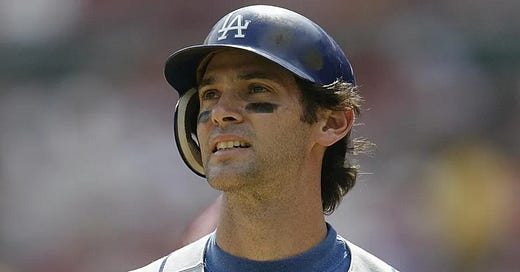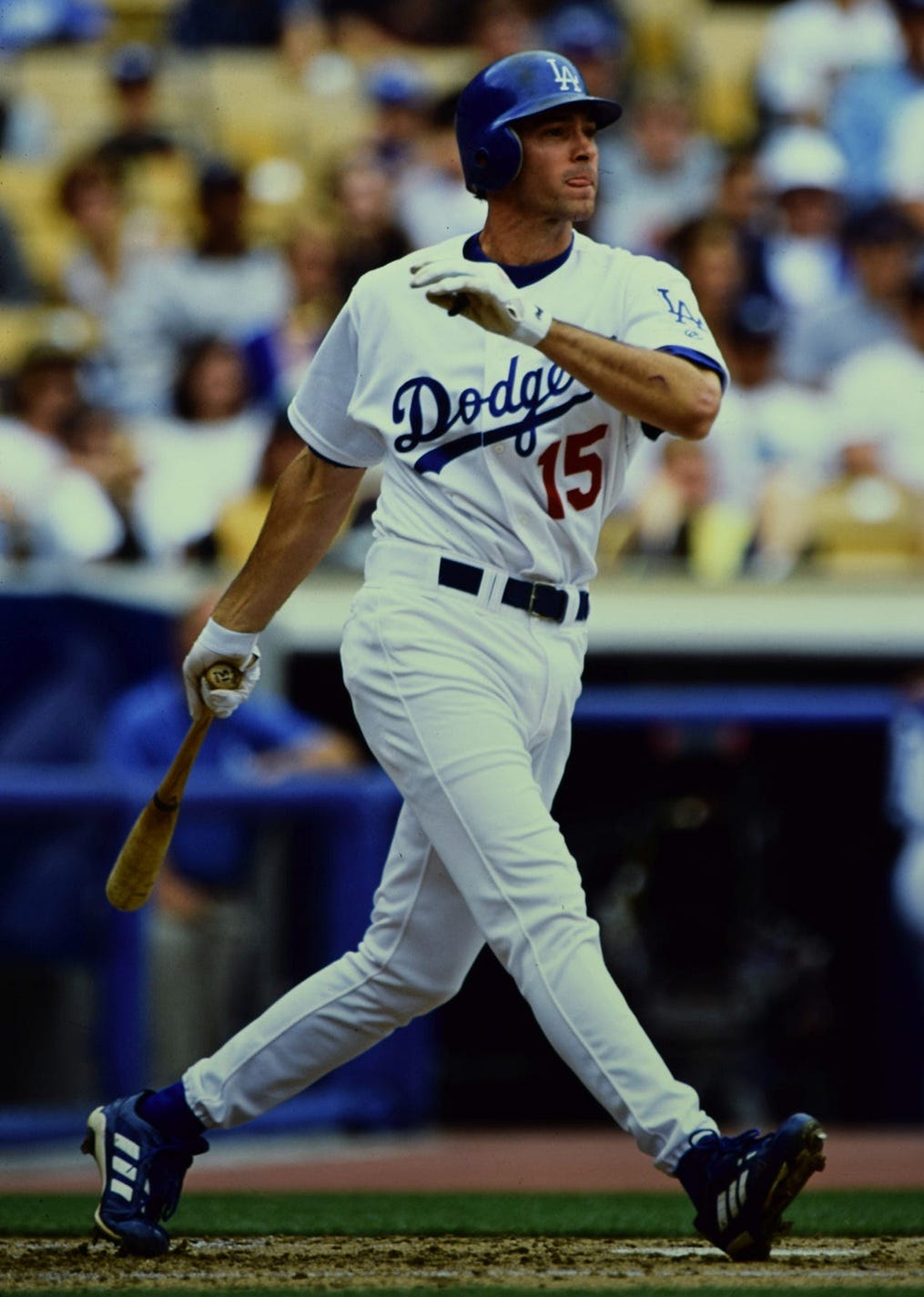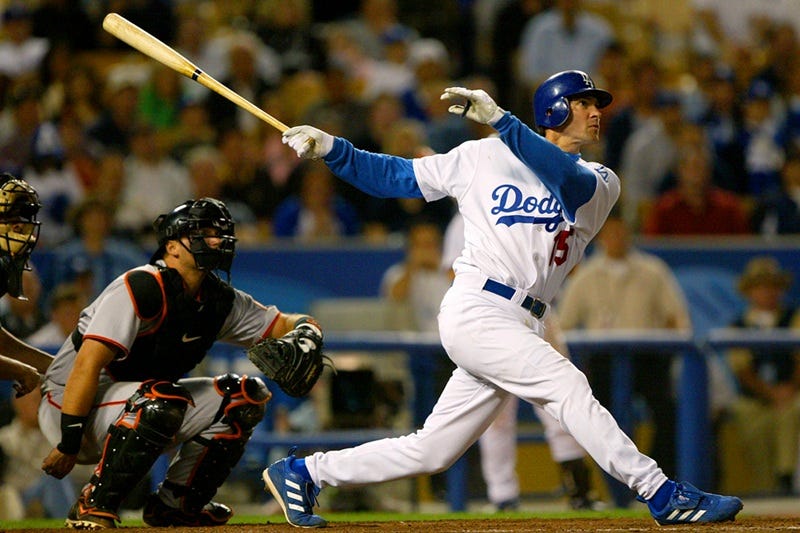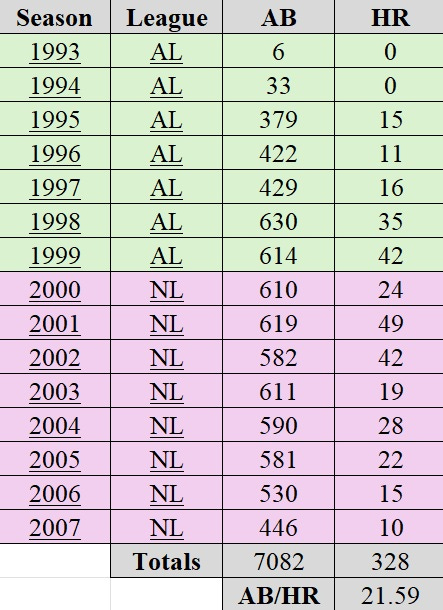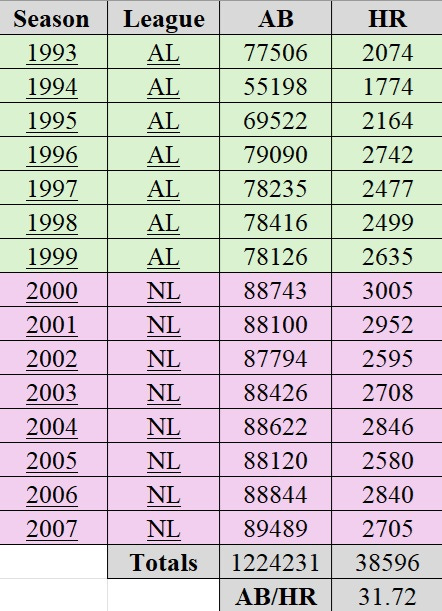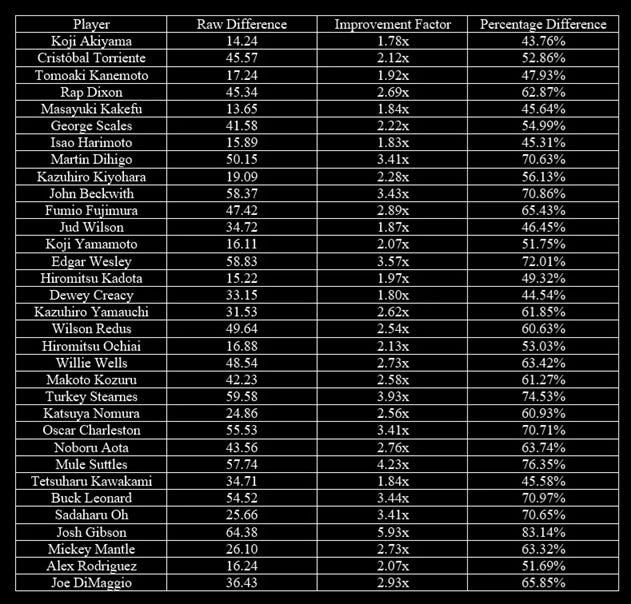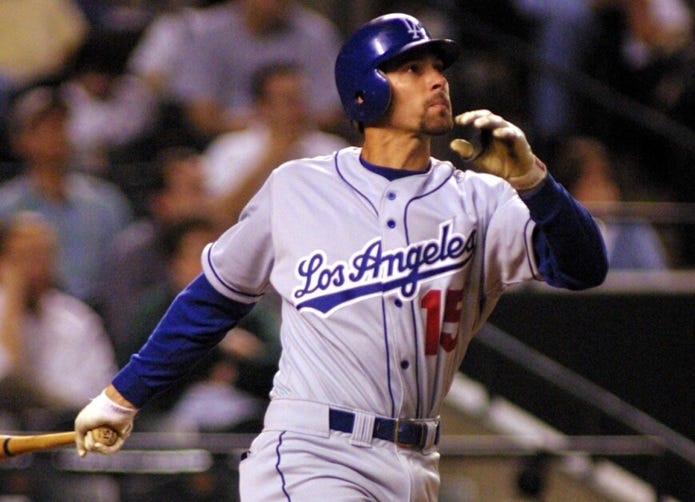Shawn Green: The Jewish Juggernaut
The Power Hitter Pantheon: Baseball’s Greatest Home Run Heroes
This project aims to determine the greatest home run hitter of all time by comparing each slugger’s statistics to the average of their era using three formulas. The final adjusted stats will then be used to compare them head-to-head with other all-time greats.
Shawn Green will be the next legendary MLB slugger examined in this study. For a detailed biography of Green, please click here.
Before analyzing Green's career numbers, it's essential to recognize his accomplishments as a hitter. Let's examine his rankings in key hitting statistics throughout his career. Green appeared on the MLB leaderboards in the following categories:
1999: #3 (134)
2001: #9 (121)
1999: #4 (361)
2001: #6 (370)
1999: #2 (45)
2000: #9 (44)
2003: #2 (49)
1999: #9 (42)
2001: #5 (49)
2002: #6 (42)
1999: #2 (87)
2001: #10 (84)
2001: #7 (12.63)
2002: #10 (13.86)
Now that we have a clear understanding of Green's accomplishments, we can proceed with the career analysis. According to Baseball Reference, Green’s official statistics reveal a total of 328 home runs over 7,082 at-bats resulting in an average of at-bats per home run 21.59 (AB/HR).
Shawn Green played in the American League (AL) from 1993-1999, he also competed in the National League (NL) from 2000-2007.
When aggregating the statistics from each of the seasons Green competed in, the league totals include 1,224,231 at-bats and 38,596 home runs, resulting in an average of 31.72 at-bats per home run (AB/HR).
With this data, we can evaluate how Green’s performance compared to the average NL/AL hitter of his era.
Raw Difference: 10.13
Formula: League Average – Player Career AverageImprovement Factor: 1.47x
Formula: League Average / Player Career AveragePercentage Difference: 31.94%
Formula: (League Average – Player Career Average) / League Average × 100%
AB/HR
Green hit a home run, on average, every 21.59 at-bats. A lower AB/HR indicates better home run efficiency—fewer at-bats needed per home run. The typical hitter during Green’s career required 31.72 at-bats to hit a home run, suggesting Green was significantly more efficient.
Raw Difference
Green needed 10.13 fewer at-bats per home run than the average hitter. This gap highlights his above-average power.
Improvement Factor
Green’s home run rate was 1.47 times better than the league average. In other words, he hit home runs significantly more frequently than the typical player.
Percentage Difference
Green’s AB/HR was 31.94% better than the league average, reinforcing his edge in power hitting.
Green’s 21.59 AB/HR is a strong mark, showing he was a standout power hitter compared to the 31.72 league average. The 1.47x improvement factor and 31.94% better-than-average percentage difference indicate Green wasn’t just good—he was significantly better than the typical hitter of his time in terms of home run efficiency. Green’s stats place him among the better sluggers of his time, showcasing his ability to deliver power consistently across a 15-year career spanning two leagues.
In our initial case study, we analyzed the careers of prominent Japanese and Negro League sluggers, alongside MLB greats Mickey Mantle, Alex Rodriguez, and Joe DiMaggio for comparison.
Now, let's compare Green’s career statistics against these baseball legends to gain a clearer perspective on how he stacks up.
We’ve previously analyzed the power hitting careers of Vladimir Guerrero (14.40/1.79x/44.23%), Vinny Castilla (13.04/1.61x/37.95%), and Tino Martinez (12.08/1.58x/36.54%).
Shawn Green's career statistics are similar to those of Tino Martinez, albeit slightly lower.
All four of these MLB hitters are the in the statistical orbit of Koji Akiyama. Akiyama hit 437 home runs and had 7,997 at-bats. His Raw Difference was 14.24, with an Improvement Factor of 1.78x and a Percentage Difference of 43.76%.
If you find this content valuable and would like to support the ongoing studies and articles, your contributions via CashApp are truly appreciated.
Your support helps fund the tools, research, and time dedicated to these projects. Every contribution, no matter the size, plays an important role in keeping this work going.
If you're unable to contribute financially, sharing this article on your social media (X, Facebook, etc.), emailing it to a friend, or texting the link to a fellow baseball fan is just as valuable.
Thank you for your support!

